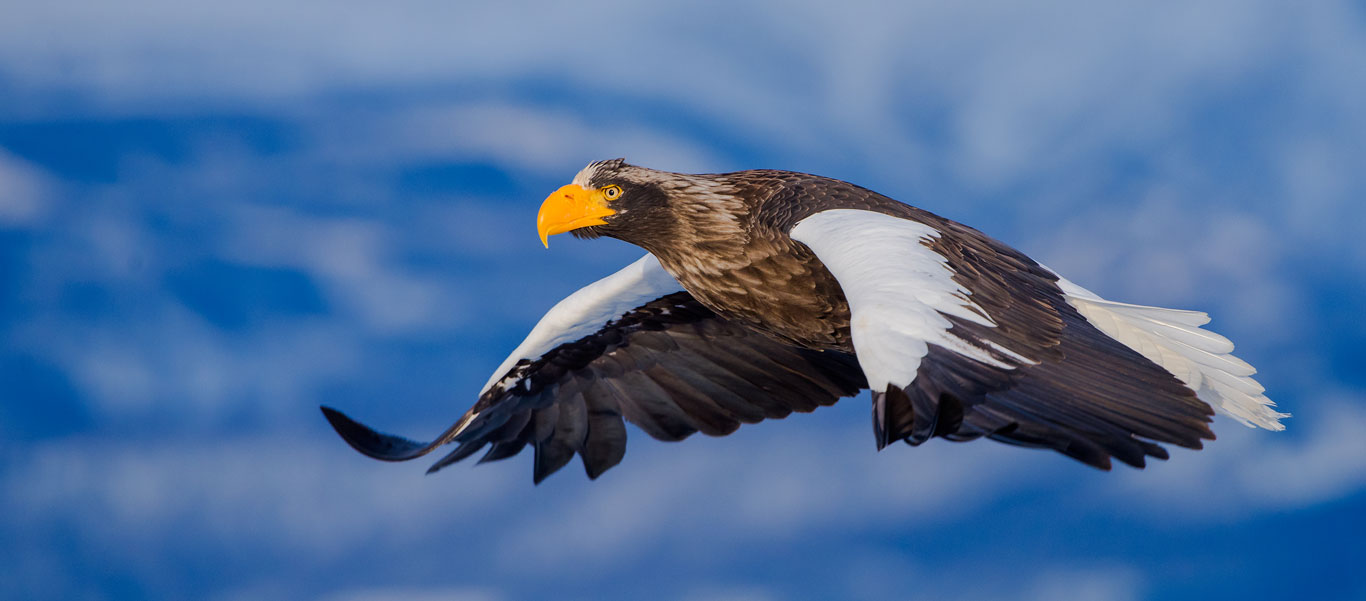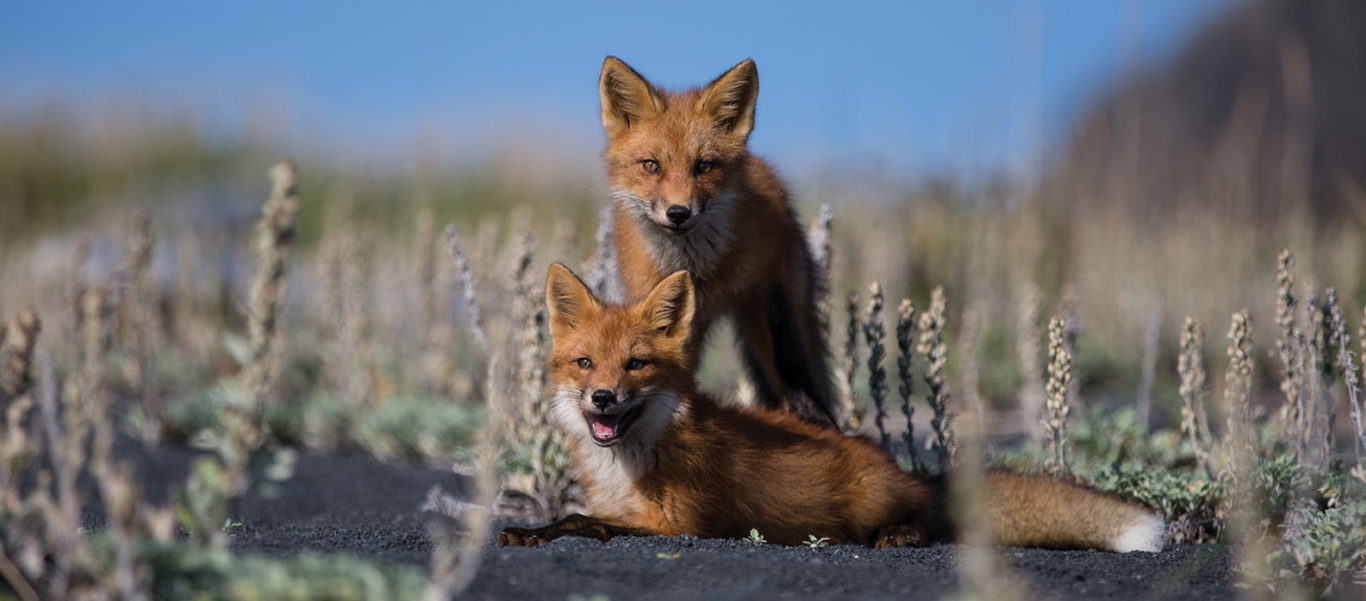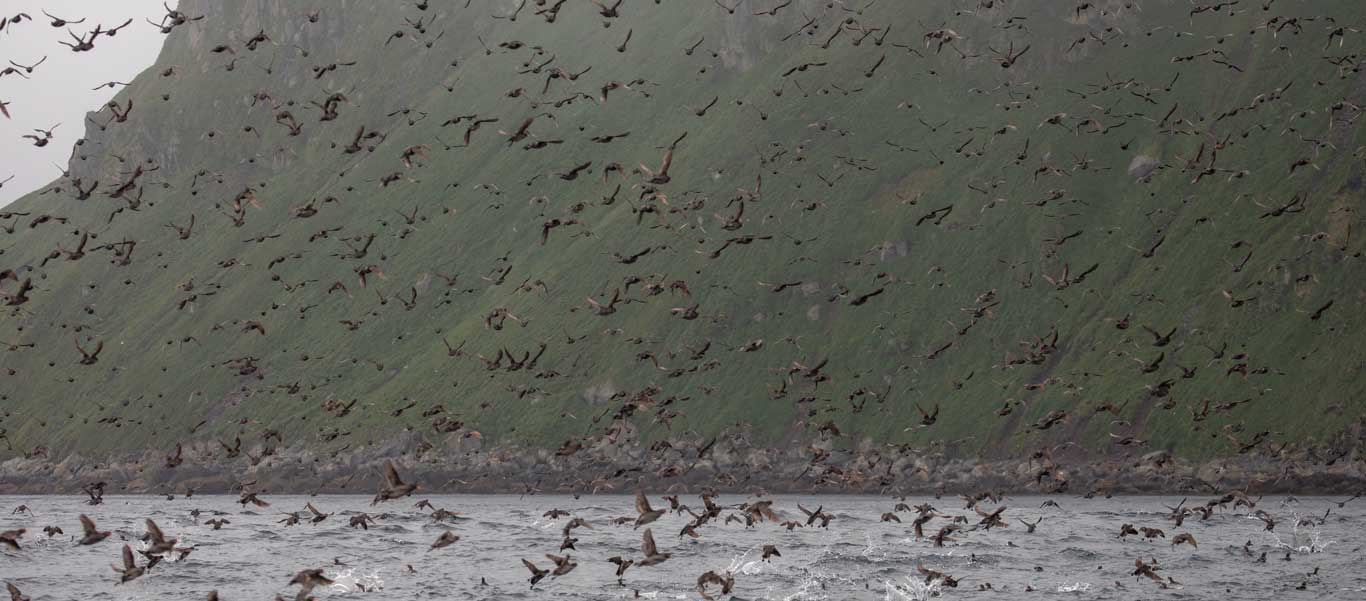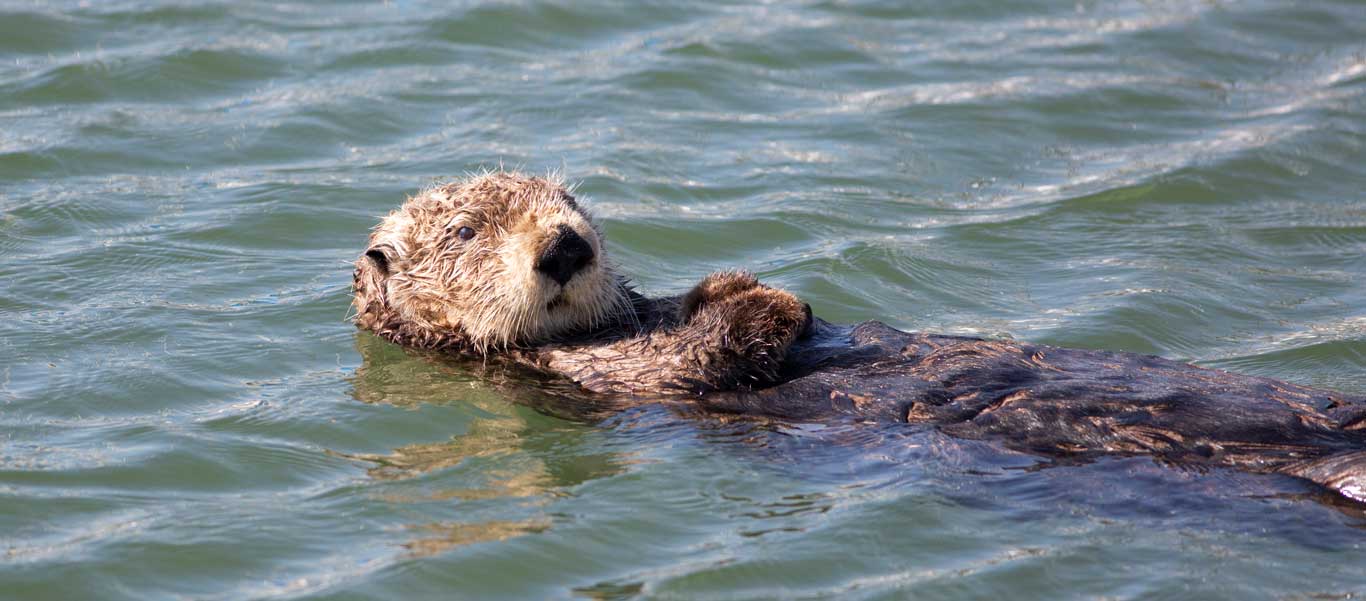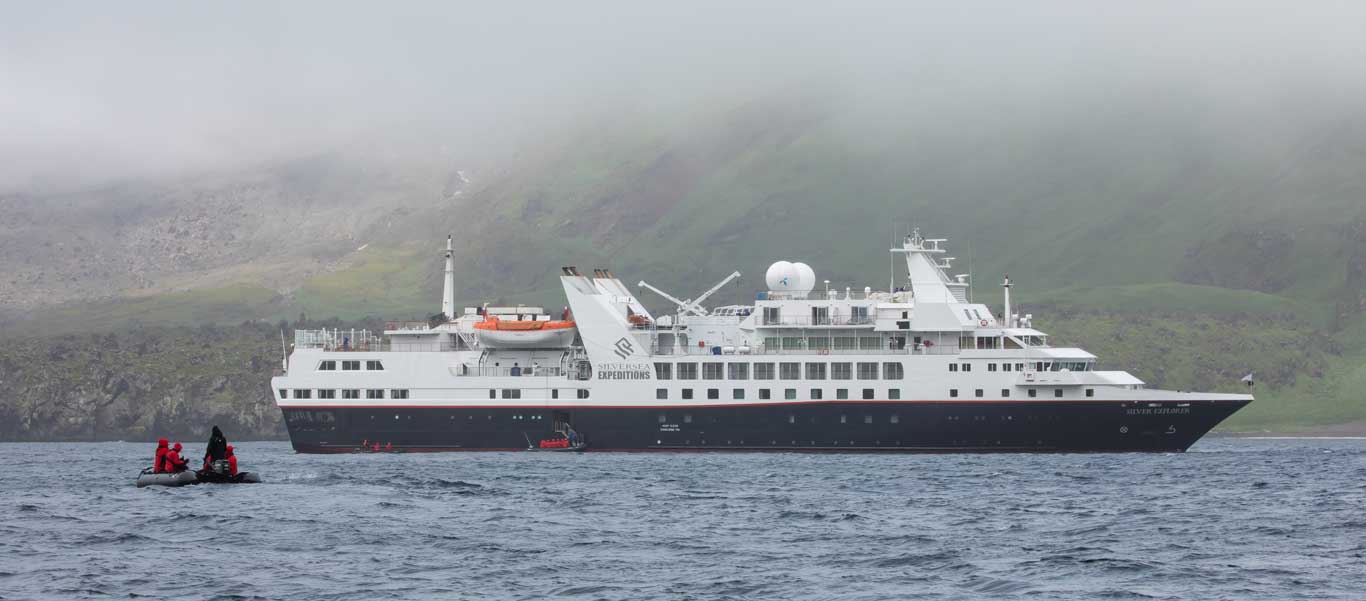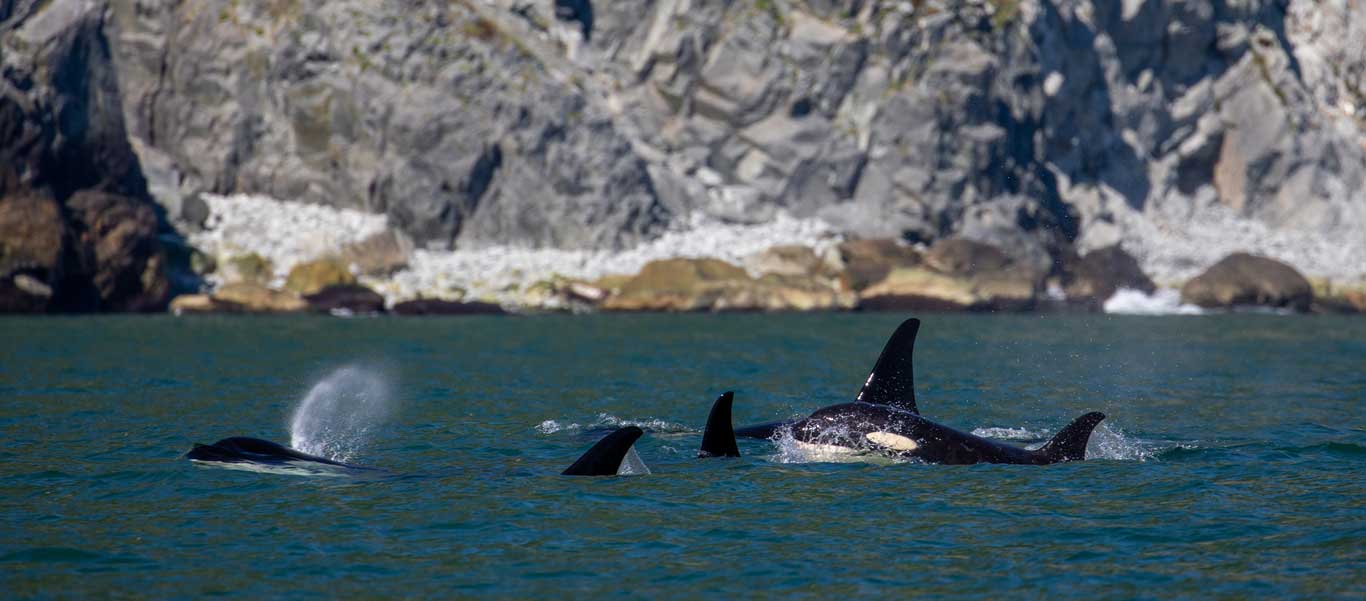Sea of Okhotsk
onboard Silver Explorer
Russian Far East Cruise
Far up in the frozen north, an ocean away from mainland America and nine time zones from Moscow, lies the spectacularly wild Russian Far East. Here, on the shores of the Sea of Okhotsk, one is more likely to encounter a Brown Bear than a foreign tourist. The only traffic occurs at sunset, when rafts of auklets fill the sky on their return to nest atop active island volcanoes, and gray whales congregate to cavort in tiny Piltun Lagoon. Climb aboard the Silver Explorer, expertly engineered to allow access to rugged coasts beyond the reach of ordinary vessels, and join Apex for this 20-day Russian Far East cruise through the “Land of Fire and Ice.” Learn of Vitus Bering’s visits to the same shores 300 years ago, meet locals living in harmony with their awesome and often brutal surroundings, and settle in among the innumerable seabirds and cetaceans who still own this corner of the earth.
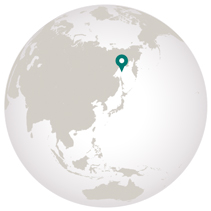
Destinations
- Travel by Air
- Travel by Road
- Travel by Boat
- Travel by Bullet Train
- Travel by Rail
- Travel by Dog Sled
- Day 1
- Day 2
- Day 3
- Day 4
- Day 5
- Day 6
- Day 7
- Day 8
- Day 9
- Day 10
- Day 11
- Day 12
- Day 13
- Day 14
- Day 15
- Day 16
- Day 17
- Day 18
- Day 19
- Day 20
-
Wednesday, June 17: Arrive Sapporo, Japan
Arrive late tonight in the lively capital of Hokkaido, Japan’s northernmost island, and transfer to your hotel. Rest up for the adventure to come. Overnight at Keio Plaza Hotel.
-
Thursday, June 18: Sapporo / Otaru / Embark Silver Explorer
Meet your expedition team this morning over a welcome breakfast and briefing at the hotel. Travel to Otaru for a city tour highlighting this historic trading port. Start with an exploration of the Old Aoyama Villa, built by Masakichi Aoyama, a herring millionaire. No expense was spared in its construction and the large building is filled with traditional calligraphy, Japanese paintings and intricate woodwork. Stroll along the restored historic Otaru Canal lined with Victorian-style gas lamps, and shops and museums in repurposed brick warehouse buildings. Enjoy a sake tasting at Tanaka Sake Brewery before transferring to the port to embark the Silver Explorer, your home away from home for the next 18 nights. Settle into your suite, then join your fellow travelers on deck to watch the ship pull away from the harbor and head north.
-
Friday, June 19: At Sea / Korsakov, Sakhalin Island, Russia
Enjoy the morning at sea with lectures by your expedition team on the seldom-visited Russian Far East. There is so much to learn about its flora, staggering fauna, geology and history. This afternoon, arrive at Korsakov, Sakhalin’s first Russian military post. Enjoy a traditional welcome of bread and salt as you clear into Russia.
-
Saturday, June 20: Korsakov / Yuzhno-Sakhalinsk
After breakfast, disembark and transfer by vehicle to Yuzhno, Sakhalin’s capital. Founded by Russian convicts in 1882, Yuzhno became a Japanese prefecture in 1905, then returned to the Soviets when they occupied it at the end of WWII. To this day, Yuzhno remains a multicultural haven, with active indigenous communities like Ainu, Oroki, and Nivkh, as well as Russians, Japanese and Koreans. Visit the Russian Orthodox Church and attend a choir performance, tour the impressive Regional Museum and the bustling market. Enjoy a performance of traditional Cossack song and dance over lunch. You may opt to join a separate group, which will bypass the city tour in favor of a bird walk to look for Pelagic Cormorants, Black-tailed and Slaty-backed Gulls, Black-legged Kittiwakes, and possibly Glaucous Gulls. The two groups will meet at lunch and head back to Korsakov and the Silver Explorerin the afternoon.
-
Sunday, June 21: Tyuleniy Island
You will know you’ve arrived at this tiny island off the southeast coast of Sakhalin by the cacophony of pinniped barks, huffs and wails that rise to greet you. Tyuleniy means “seal” in Russian, and it’s a fitting name—a 1911 International Convention banned seal hunting here, and Northern Fur Seal numbers have grown steadily since. In the nineties, Steller Sea Lions started breeding on the island, and their colony now numbers about 2,500. Zodiac excursions around the island will afford you many opportunities for up-close viewing of these magnificent beasts, which will be arriving on the beaches to pup at this time of year. The visit is also well timed to see Black-legged Kittiwakes, Tufted Puffins, and Common Murres.
-
Monday, June 22: Piltun Lagoon, Sakhalin Island
Piltun Lagoon lies in a remote corner of northeastern Sakhalin. Its protected, relatively warm waters provide a rare haven for calving Western Gray Whales, which number just a couple hundred individuals, as well as Harbor, Ringed and Bearded Seals. Travel by Zodiac to the shallower waters for close encounters with whales as they feed and frolic. Venture ashore for a walk and search for the magnificent Steller’s Sea Eagle, Aleutian Terns, Pine Grosbeaks, Siberian Rubythroats, Dusky Warblers and rare Long-billed Murrelets.
-
Tuesday, June 23: Iony Island
Iony is essentially a small rock, far out in the center of the Sea of Okhotsk. Yet, this rock manages to harbor a staggering array of wildlife. Birds take up all available land—Guillemots, murres, kittiwakes and Parakeet, Whiskered and Least Auklets crowd Iony’s cliffs in jaw-dropping concentrations. Steller Sea Lions occupy the few rocky outcroppings, to the point where a Zodiac landing is impossible. Still, you can cruise the perimeter of the island, feasting your eyes on these creatures and the few lost passerines that inevitably dot its shores.
-
Wednesday, June 24: Okhotsk
This storied town on the north shores of the sea by the same name has been a feature of Russian history since the first Cossack explorers ventured east. When famed commander Vitus Bering was commissioned to search for a land bridge between Asia and America in 1725, he established his headquarters here. Today, Okhotsk is the center of commercial fishing in the region, exporting significant quantities of salmon worldwide. Still, walking through town, one gets the feeling that little has changed since Bering’s time—modest clapboard houses stand surrounded by small gardens. Friendly locals greet you from shop windows. Visit the museum, thenhead to the mouth of the Okhota River, frequented by thousands of terns, Glaucous, Kamchatka, Vega and Black-headed Gulls, and dozens of Steller’s Sea Eagles.
-
Thursday, June 25: Yegrineyskaya Bay / Ushki
Disembark at the tip of this small peninsula, and choose from several walks, varying in length and focus. Some may choose to follow game trails into the pine forest beyond the tundra, while others stick close to the beach and the abandoned hut at the landing site. Look for bear prints and scat as you go. Enjoy a bonfire on the beach before returning to the ship for dinner.
-
Friday, June 26: Talan Island / Zavyalov Island
Take the morning to explore Talan, the smallest of the Spafaryev Islands off the mainland, and a research center for Russian ornithologists monitoring annual migrations. Best known for having the world’s largest Crested Auklet colony, with over a million individuals nesting here in the summer, Talan also harbors an extraordinary number of Black-legged Kittiwakes and Steller’s Sea Eagles. Circumnavigate the island by Zodiac and get up close and personal with the thousands of Brunnich’s and Common Guillemots bobbing in the surf. This afternoon, visit Zavyalov Island, larger and more mountainous than Talan. Siberian Dwarf Pines and Dwarf Birches grow plentifully here, but their diminutive height offers little shelter for the hulking Kamchatka Brown Bears that may be seen foraging for berries and roots, and feasting on shellfish at the shoreline.
-
Saturday, June 27: At Sea
Take the day to rest as we travel east toward the Kamchatka Peninsula. Learn about the region at informal lectures and watch for sea life with the expedition team on the observation deck.
-
Sunday, June 28: Opala River, Kamchatka
The Opala Riveroriginates on the southwestern slopes of the still-smoking Gorelyj volcano, and flows through mountain tundra and marshlands, forests of Stone Birch and grasslands, into the Sea of Okhotsk. Fish abound here, and June marks the start of salmon season. Take Zodiacs upriver to see Chinook, Sockeye, Pink and Coho Salmon, as well as char and trout. Where there is salmon, there are bears, and the population of Brown Bears here is hearty, allowing for a good possibility of sightings.
-
Monday, June 29: Utashud Island / Kerkurnyy Point
Early this morning, visit Utashud, which is comprised of three small islands, remnants of a volcano that stood in Vestinik Bay, around the southeastern tip of Kamchatka. Although the island is not forested, fragments of giant petrified trees can be seen on its shores, along with the remains of a half-sunken ship. Utashud is known for its population of Sea Otters—up to 300 individuals—as well as its Steinneger’s Harbor and Spotted Seal rookeries. In the summer, a group of gray whales often feeds here. Ten species of marine birds inhabit the island, including one of the largest colonies of Slaty-backed Gulls, with 4,000 pairs counted. Weather permitting, take a Zodiac cruise along the stunning cliffs of Kekurnyy Point this afternoon. Resident Orcas are often seen feeding along the coastline while otters bob in the surf.
-
Tuesday, June 30: Shumshu / Atlasova, Kuril Islands
This morning, visit Shumshu, one of the northernmost of the Kurils, which consist of 56 islands that separate the Sea of Okhotsk from the Pacific. Shumshu is the lowest lying of the islands, and is covered with lakes and marshland. Sea Otters and Largha Seals abound along its shores. Vestiges of World War II are everywhere, including a preserved Japanese airfield with runways, hangars and fragments of planes. Shells and cartridges can still be found strewn about, as well as evidence of pits and scars from bombings. Due west from Shumshu is Atlasova, the highest of the Kuril Islands, with its almost perfect (still active) volcanic cone standing at 7,674 feet. Onshore, see the remains of a Soviet-era Gulag where female political prisoners were taught to farm foxes. Peregrine Falcons, Eurasian Wigeons and Tufted Ducks have been spotted flying above the black lava beach.
-
Wednesday, July 1: Onekotan Island
Moving south down the Kuril chain, arrive at Onekotan, one of the largest Kurils, comprised of the two stratovolcanoes, Nemo and Krenitsyn. This morning, land below Nemo on the northern end of the island. A beautiful walk to Black Lake will reveal wildflowers carpeting the meadows and, if it is clear, a truly magnificent view of the volcano. Birders, look for Rough-legged Buzzards, Long-toed Stints and Common Reed Buntings. Later in the day, head south toward Krenitsyn, a rare geological phenomenon—within its caldera lies a vast lake, out of which peeps the cone of a new volcano. Hike around the base of the volcano before returning to the ship.
-
Thursday, July 2: Yankicha Island
This morning, climb aboard Zodiacs for a landing on impressive Yankicha Island. One of the highlights of the Kuril Islands, Yankicha consists of a sinking volcanic caldera only accessible by Zodiac during high tide. Inside the magnificent lagoon, witness Yankicha’s ongoing volcanic activity with smoking fumaroles and hot springs. The number of auklets that breed here is truly incredible, and Arctic Foxes are often spotted scurrying about the shore. Although Crested Auklets are relatively common, more elusive Whiskered Auklets feed offshore, forming rafts outside the caldera. At sunset, watch the “auklet haze” as the birds return to their nests and settle for the evening.
-
Friday, July 3: Chirpoy Island
Chirpoy consists of three overlapping stratovolcanoes. Cruise around the island in Zodiacs and feast your eyes on the staggering number of breeding fulmars, kittiwakes, puffins and auklets on Chirpoy’s black lava cliffs. Explore the sizable Steller Sea Lion rookery on the island’s west side and, conditions permitting, land on the Pacific side and hike the foothills of the smoking volcanoes.
-
Saturday, July 4: At Sea
Today, scan the water for Sperm Whales, Orca and Sea Otters as you head back toward Japan. Laysan Albatross, and with luck, the exceedingly rare Short-tailed Albatross, may be spotted soaring in your wake.
-
Sunday, July 5: Korsakov (Clearance) / At Sea
This morning, enjoy a traditional performance onboard as we clear out of Russia at Korsakov. This evening, share tales of your adventures over a farewell dinner.
-
Monday, July 6: Otaru / Disembark Silver Explorer / Sapporo
Arrive today in Otaru and disembark the ship. Transfer to Sapporo for your international flights home.

